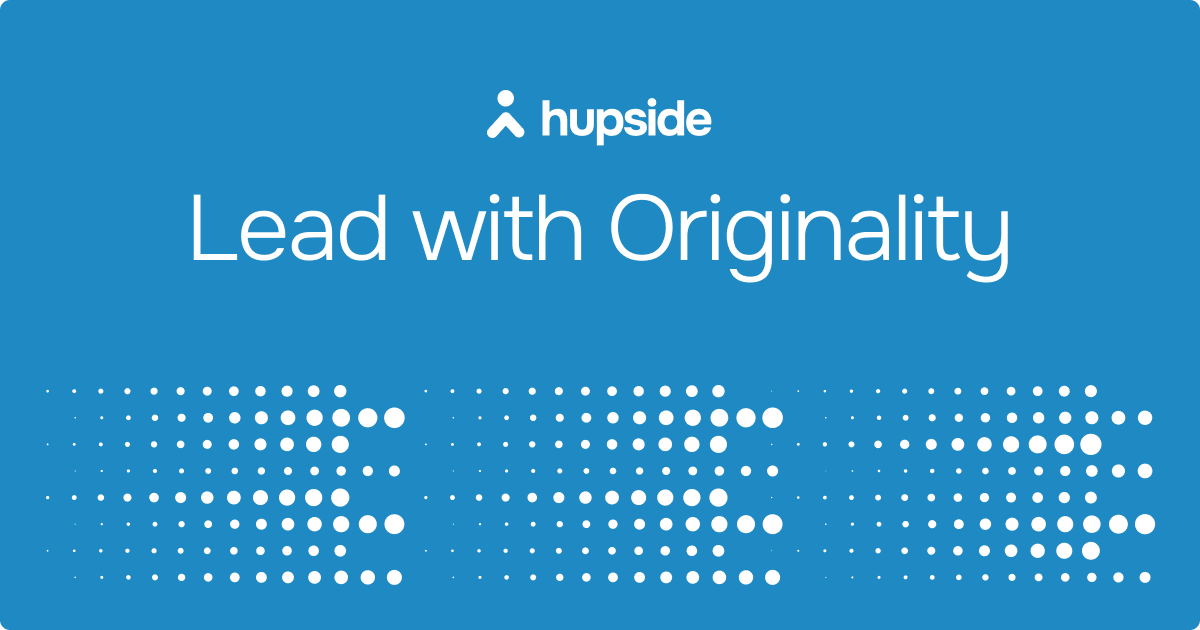Intro
In this time in history, we are surrounded by innovation. In the stores we walk through, the streets we stroll down, and the ads we scroll by, we are fed new and interesting ideas and products nearly constantly. There is no shortage of that. But every once in a while, we see a new idea, a new category of products and services come to life that creates a quantum shift in the way we work and live. This category creation is much more transformational than simple product innovation, and it can usher us into a new era. Like Artificial Intelligence (AI) and the iphone are new technology categories, athleisure is a new clothing category, there’s another category emerging in the technology space that will change the way we do business: Original Intelligence (OI).
A New Economic Age
Before looking at what OI is and how it applies to business, let’s go back in time to make sense of the future. At every major turning point in our economic evolution, humanity has made advancements in technology that have made our lives easier and better. The mechanization of things improved the way we did manual labor. Then, systems technology improved the way we performed knowledge work. Now, with AI we have access to knowledge in a matter of seconds. Historically, as our technology has improved, the people using it have had to evolve to continue to drive innovation and add value. The question is, where do humans go from here?
The Nature of AI Makes It Great…For Most
AI offers extraordinary advantages: speed, scale, and the automation of routine knowledge. This has already proven to be extremely helpful in scaling businesses of all sizes. We are seeing big-name companies making bold, strategic decisions to put AI at the forefront of their futures. In healthcare, it is accelerating drug discovery and powering diagnostic tools that interpret scans with superhuman accuracy. In legal and finance sectors, it streamlines research, document generation, and fraud detection. The possibilities are seemingly endless—in nearly every function of a company, there’s a case for making AI part of its workflow.
What makes AI great is the nature of how it works—in simple terms, it quickly looks across its already-existing data sets and by using sophisticated statistical analysis, it provides an answer to a prompt that is so close to an accurate response that many wonder if it is truly human. In many cases, this is an extremely effective tool. However, in some cases, this is limiting and a potentially harmful risk. That’s because in order to do its job, AI is homogenizing content and has a bias towards its own content. In simple terms, this means that the more we use AI, the less likely we are to get new, original content. For some jobs, this might not be a problem. However, when we think about product development, company creation, talent assessment, and more, sameness is a competitive disadvantage. AI, by its nature, is not human, and therefore cannot produce something truly original. This is a problem.
The Evolution of Human Work—Creative Labor & Original Intelligence
Let’s go back to our lingering question: what do humans need to do in the AI Age? Not that long ago, as systems technology became more ubiquitous, humans were pushed to evolve their skillsets beyond manual labor and towards knowledge work. Now, with the advent of AI, knowledge is a commodity, and knowledge work on its own is becoming less valuable. In that case, what is
valuable? It’s what makes us truly human: creativity, or better yet, originality. Only humans can be truly original, and only humans can determine if an original idea has value. This ability collectively makes up what we call “Original Intelligence”. We’ve entered a new era of work, which requires creative labor and original thinking. We have to be really good at using AI tools, and we have to measure and amplify our OI.
Original Intelligence (OI)—A New Technology Category
As we can now see, the AI Age will require a new way of thinking and working in order for people, teams and businesses to thrive. A new set of technology tools are required to achieve these desired outcomes of OI: establishing the originality of an idea, measuring the ability to be original, and providing a way to determine how valuable an original idea is to a specific application, with more OI applications to evolve over time.
Unlike traditional productivity or creativity assessments that optimize known patterns or apply subjective models based upon a particular expert's knowledge and judgment, OI platforms use objective outcome-based metrics to recognize original thinking, unseen connections, and novel insights that adapt as the underlying knowledge of AI expands. OI tools do not necessarily value original thinking—they empower the human observer to determine the value for themselves.
OI is essential for:
- Hiring & HR: Find and certify truly original thinkers.
- Strategy & Innovation: Elevate ideas that challenge industry norms.
- Education: Identify students with authentic, divergent thought.
- Leadership: Empower executives to avoid groupthink and inspire transformation.
Original Intelligence Quotient (OIQ) – The Human Super Power
In order to determine OI, we need a metric to measure the level of originality: the Original Intelligence Quotient (OIQ). OIQ is grounded in rigorous, peer-reviewed research drawn from cognitive science, neuroscience, psychology, and data science. This index scores individuals on how their thinking expands beyond what we call the “idea space”, which is the expected or AI-generated outputs of homogenized ideas. OIQ is an objective measurement of how novel an idea really is—idea expansion. By quantifying how well individuals generate novel, non-obvious, and highly variant ideas, OIQ provides a repeatable, defensible framework for identifying idea expansion, and therefore Original Intelligence.
AI + OIQ = Competitive Advantage
Now, let’s put it all together. Competitive advantage in an AI-driven world requires a partnership between AI and humans. Yes, we must get really efficient at using AI. But, that’s not going to be what sets people and companies apart from each other. The defining edge of the AI era will be found in how boldly we think beyond AI’s outputs. This means pushing past AI’s best guesses, and having the insight to discern AI-content that “looks” novel but is not and to surface truly original insights, unexpected connections, and non-obvious opportunities. The ability to generate truly original ideas—ideas that challenge assumptions, reframe problems, and reveal the unexpected—will be the differentiator that sets individuals, teams, and organizations apart. Originality is a soft skill, but more importantly—it’s a strategic imperative.
Welcome to Age of Originality
As AI permeates every layer of decision-making and productivity, OI provides a framework to ensure humans remain at the center of innovation. It doesn’t compete with AI—it complements it by showcasing what only people can do. It reinforces the importance of people as the recipients of knowledge and producers of original thought. OI clearly places originality as the mechanism for companies to hire better, teams to think smarter, individuals to differentiate meaningfully, and for true value-add to occur in an AI-driven world. OI marks the beginning of a new category—one where the most valuable skill isn’t just knowing how to use AI, but knowing how to go beyond it.


